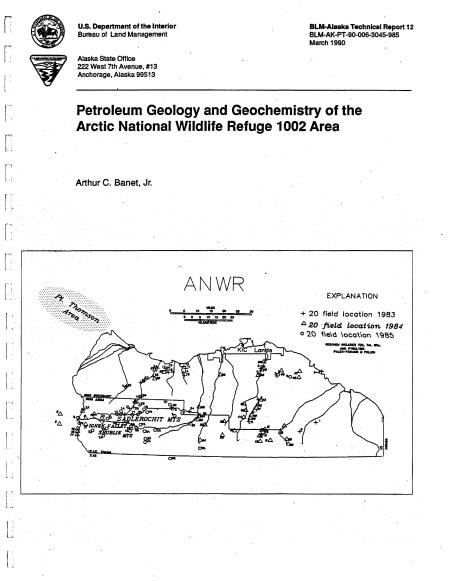Petroleum Geology and Geochemistry of the ANWR 1002 Area

A synthesis of field work, geological mapping, sample gathering and testing during 1983-85 identifies the succession of sediments extrapolated to lie beneath the Coastal Plain within the Arctic National Wildlife of northeast Alaska. Complex and diverse assemblages of Upper Proterozoic to Lower Paleozoic mildly metamorphosed sediments underlie most of the region. An angular unconformity separates these older rocks from the overlying northerly\ derived Ellesmerian Sequence elastics and carbonates which have proven reservoir potential at Prudhoe Bay. Uplift associated with Lower Cretaceous break-up tectonics has removed an undetermined amount of these rocks. A thick, overall regressive, southerly derived Brookian Sequence elastic wedge oversteps all older units. Compressional tectonics affects all three sedimentary sequences. Major decollements are unique to sequences or along bounding surfaces and typically manifest the effects of multiphasic deformation in the sediments. Geochemical data identifies several possible hydrocarbon source rocks. These include the basal Brookian shales, the richest potential source rocks of the North Slope and the regionally-known Shublik, Kingak, Pebble Shale, and Seabee formations (Shale Wall member). Naming of hydrocarbon formation migration and subsequent entrapment is dependent upon structural position.
